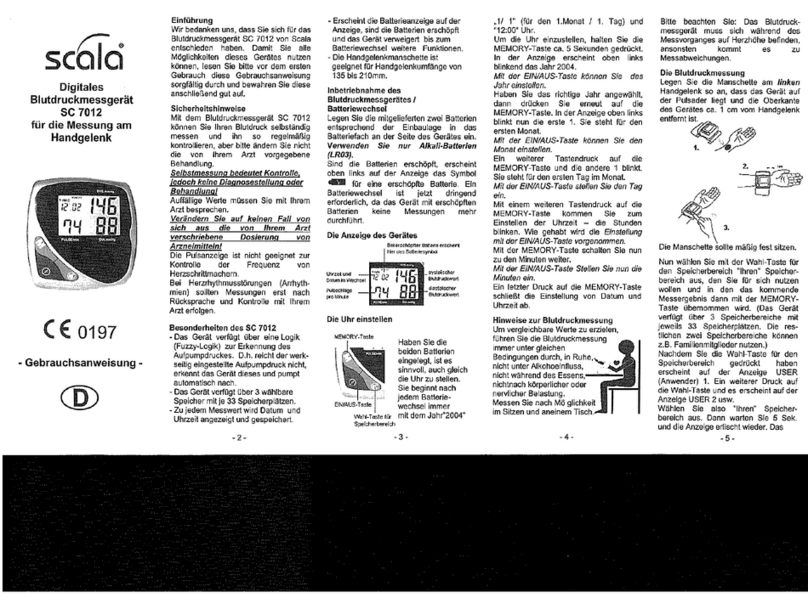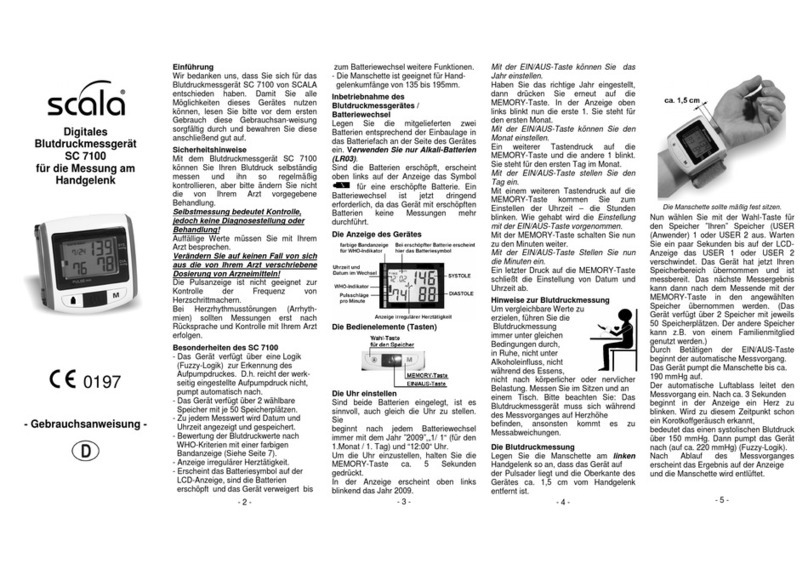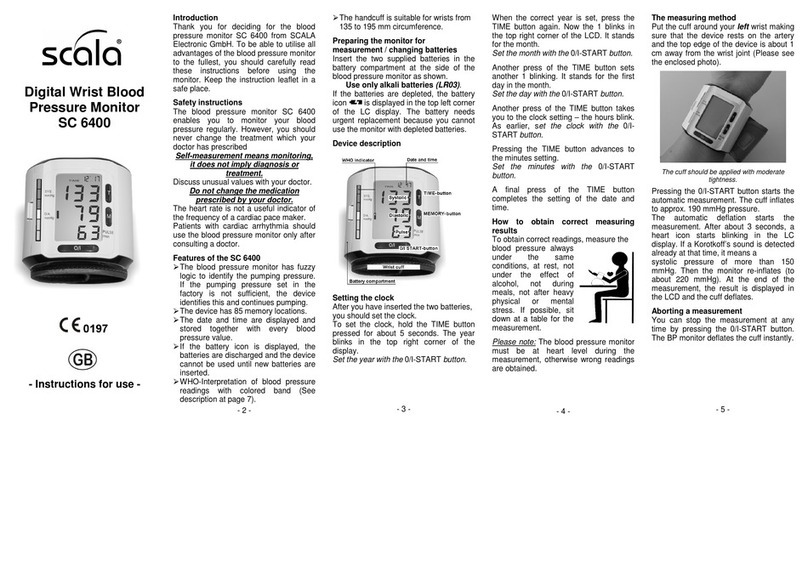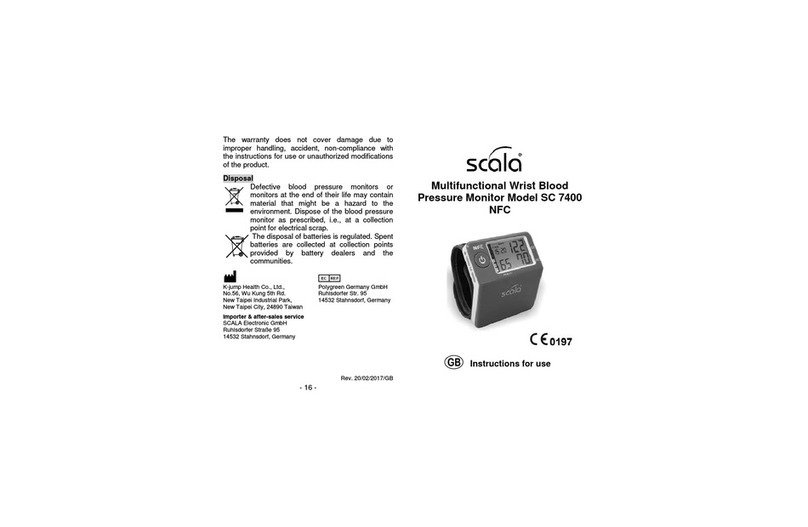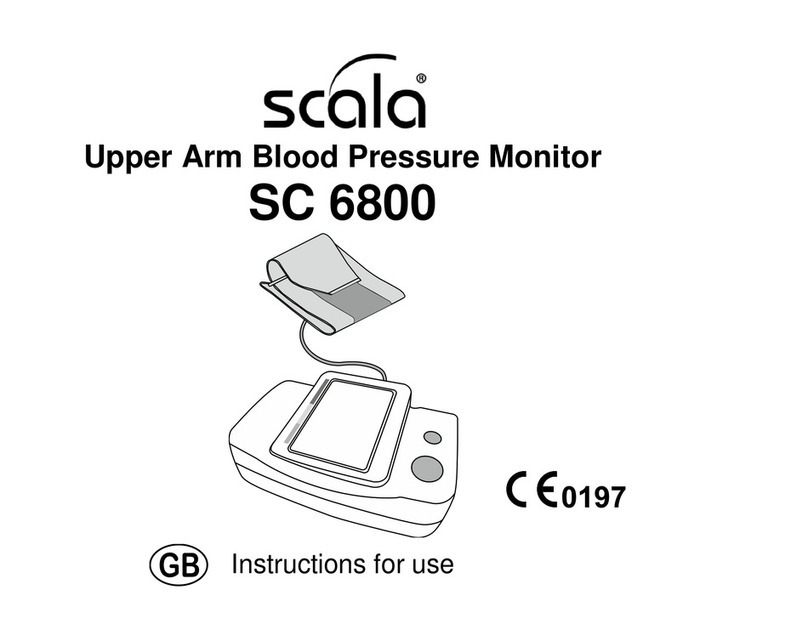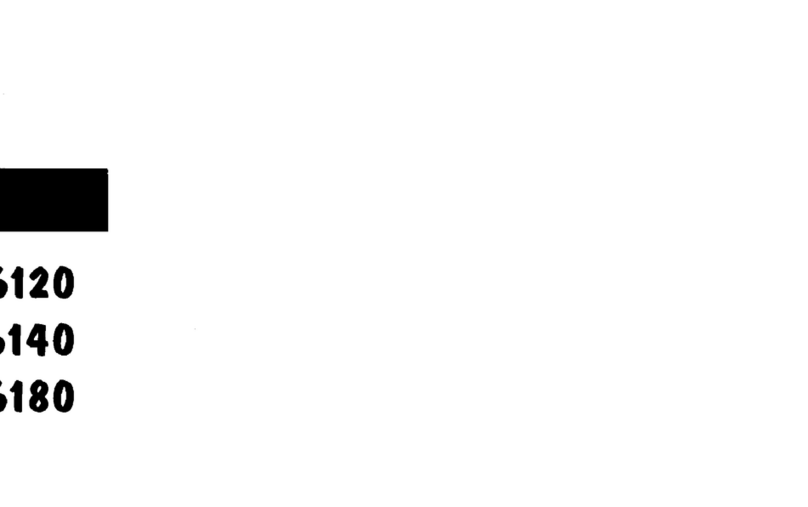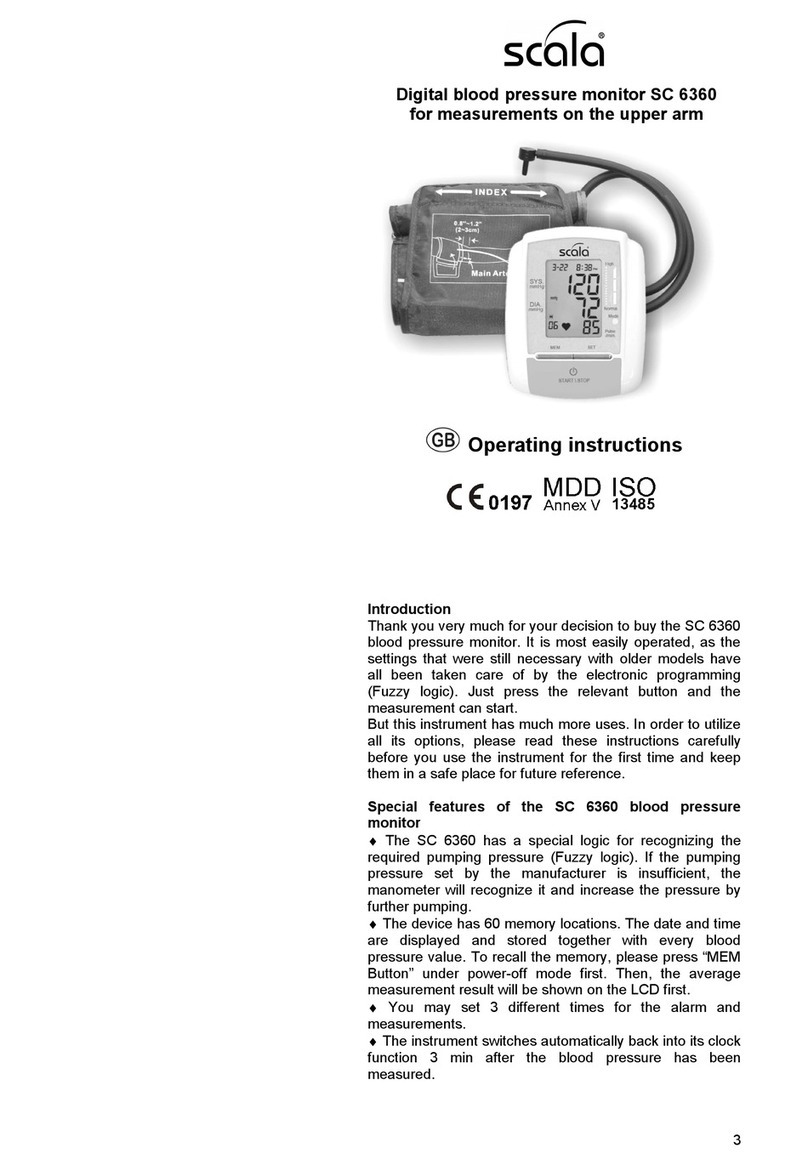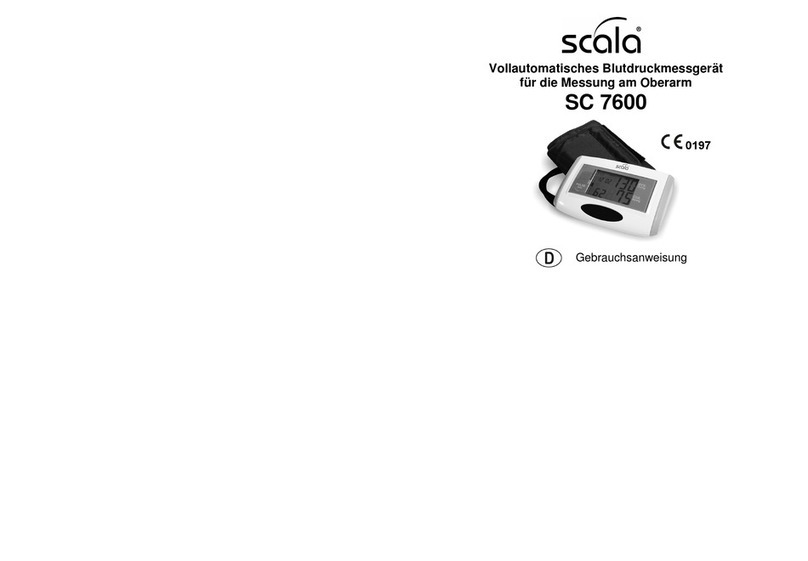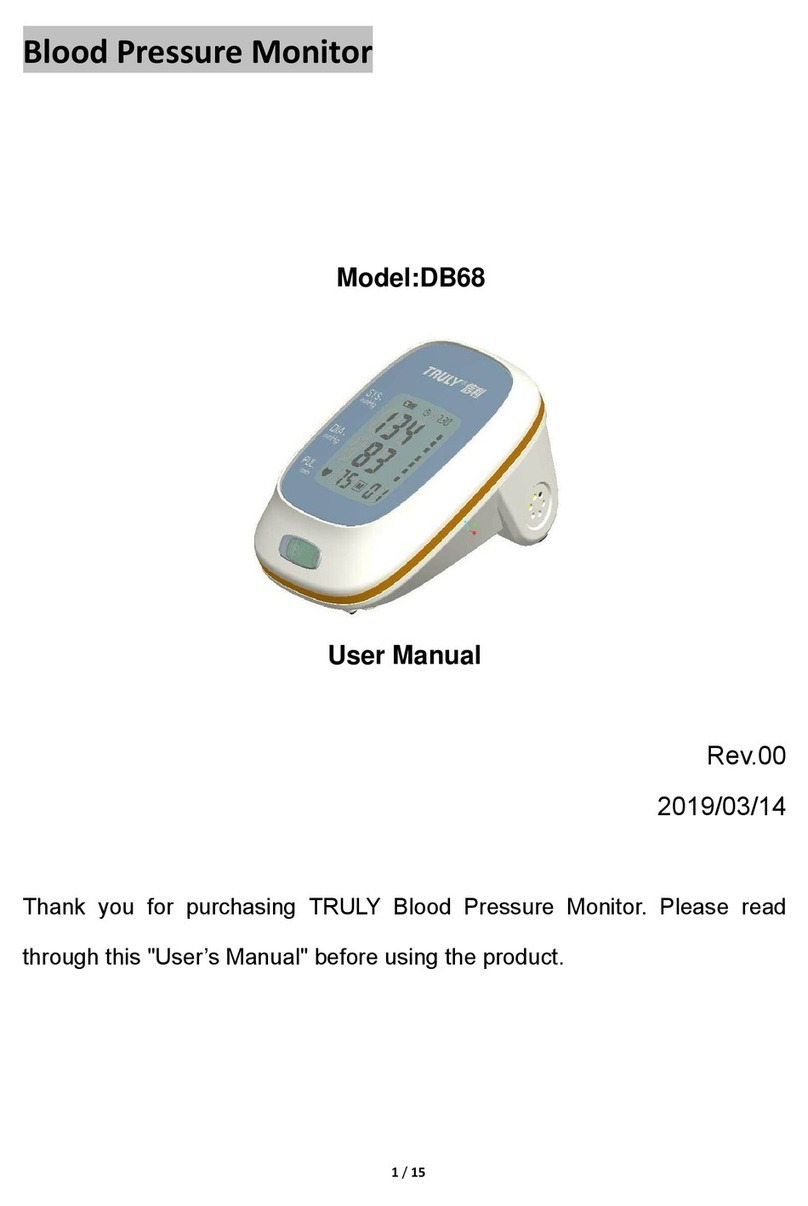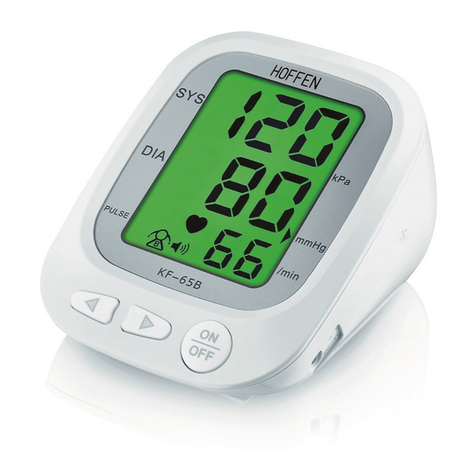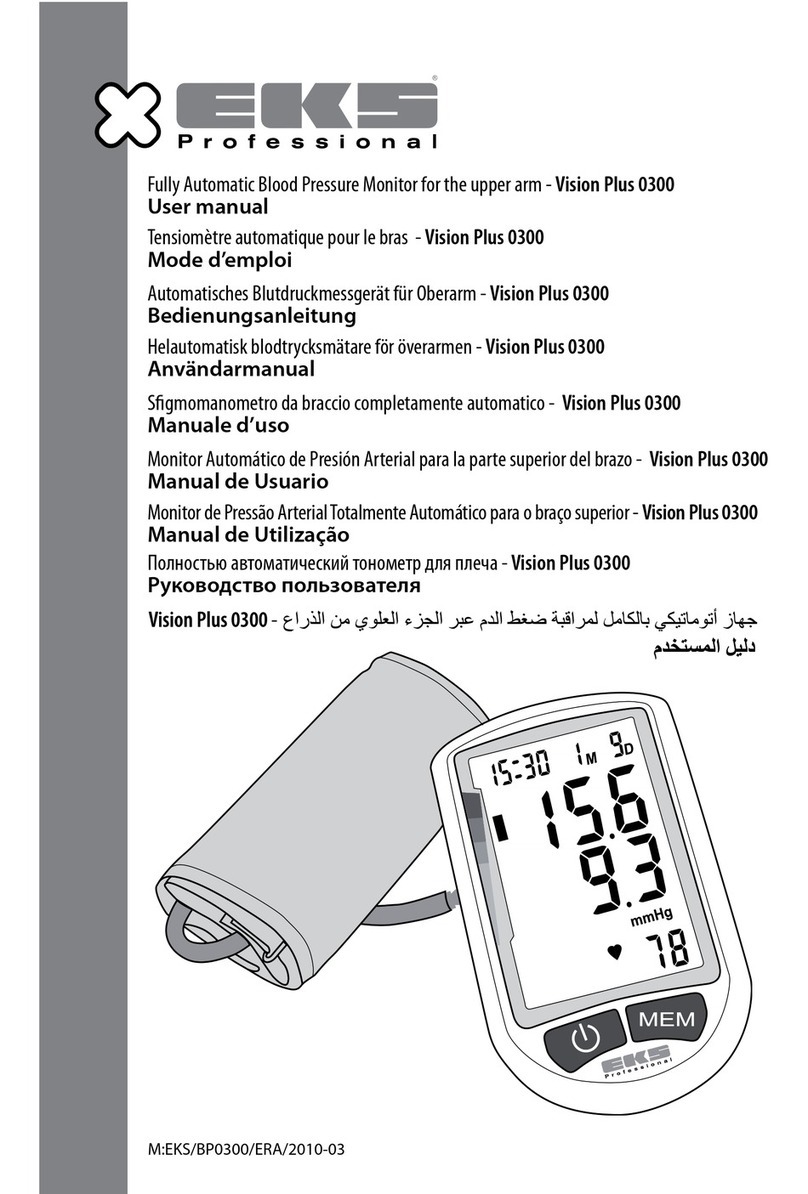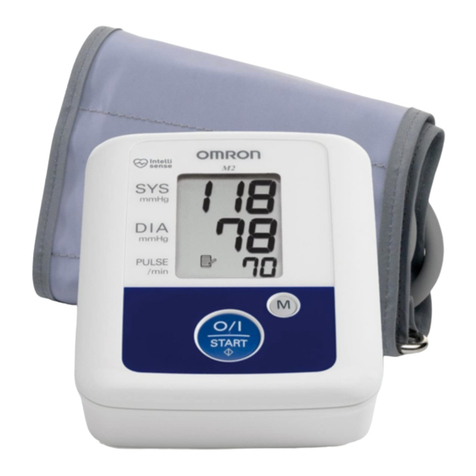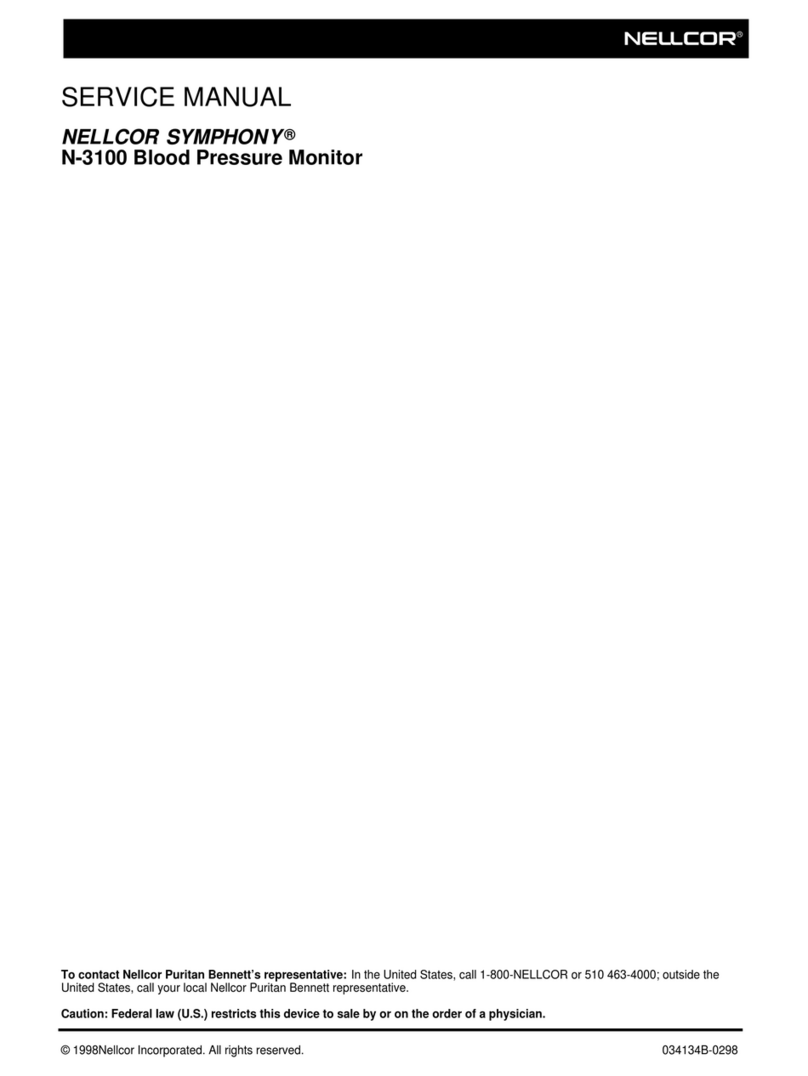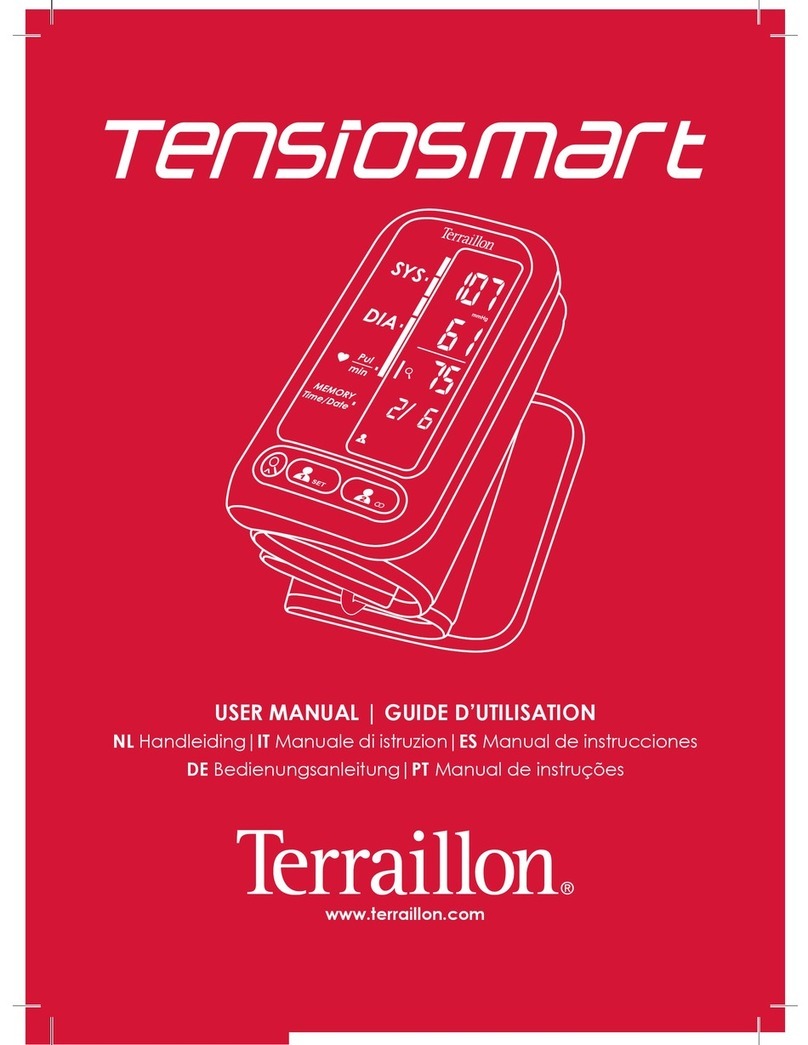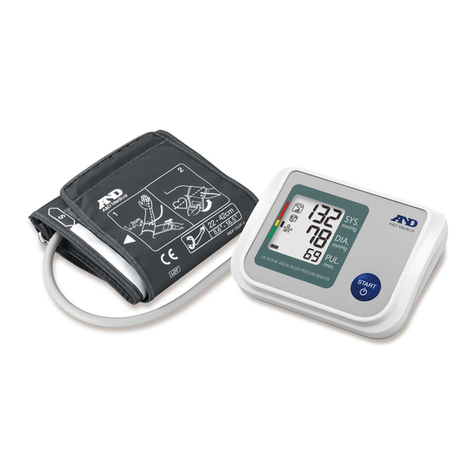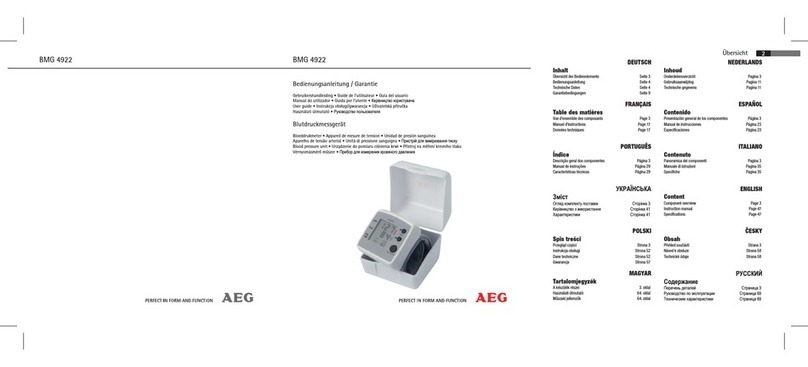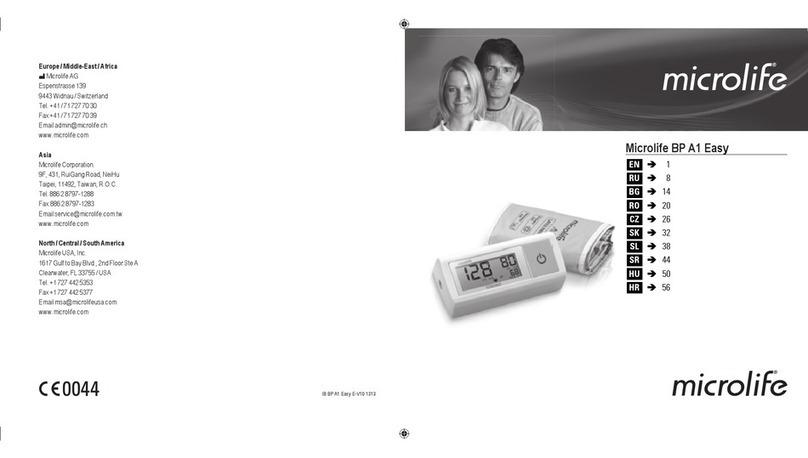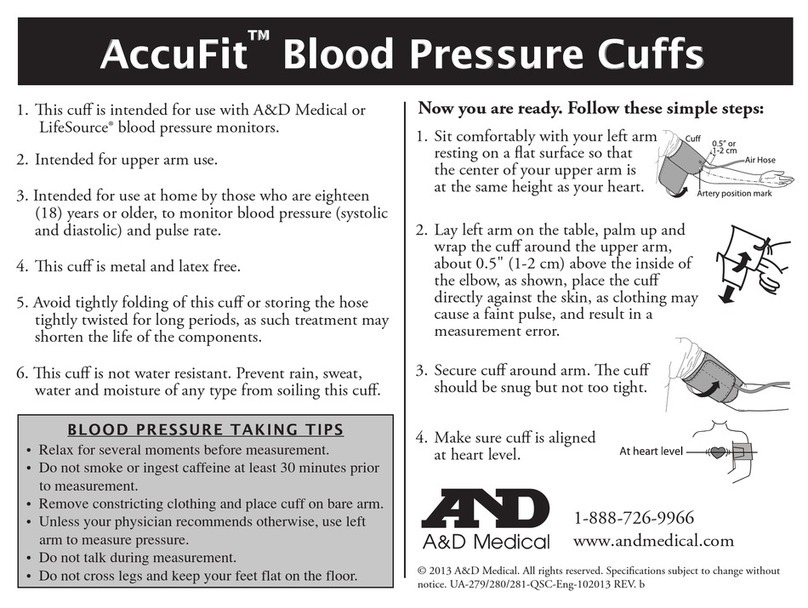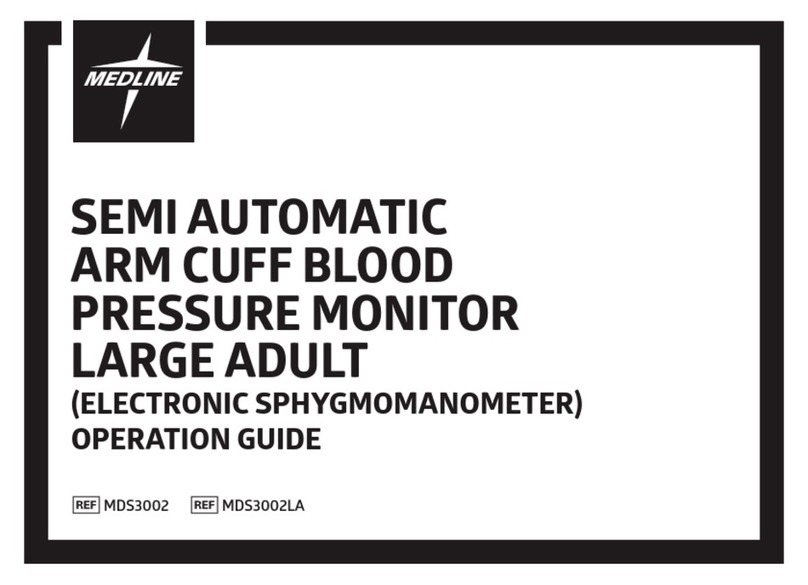The monitor has adopted your data and
is now ready for taking measurements.
Pressing the ON/OFF button starts the
automatic measurement. The cuff inflates
to approx. 190 mmHg pressure.
The automatic deflation starts the
measurement. After about 3 seconds, a
heart icon starts blinking in the LC
display. If a Korotkoff’s sound is detected
already at that time, it means a systolic
pressure of more than 150 mmHg. Then
the monitor re-inflates (to about 220
mmHg).
At the end of the measurement, the result
is displayed in the LCD and the cuff
deflates.
Aborting a measurement
You can stop the measurement at any
time by pressing the ON/OFF button. The
BP monitor deflates the cuff instantly.
The memory function
The KP-6166 saves up to 50
measurements in every memory area.
Together with each measurement
(systolic, diastolic and heart rate), the
date and time are also saved. The
measurement with the longest residence
time in the memory is assigned number
1. All other measurements increment by
one until number 50. Then the memory is
full. The next measurement occupies
memory location 50. The measurement
formerly at location 50 changes to
location 49 (etc., 48Æ47 .... 2Æ1). The
oldest measurement formerly at location
1 is lost.
You can delete the measurements in the
memory by removing the batteries for at
least 2 minutes from the BP monitor.
- 6 -
WHO-Interpretation of blood pressure
readings 29.12.2007
Meaning Systolic /
mmHg Diastolic /
mmHg
optimal < 120 < 80
normal < 130 < 85
high-normal 130 - 139 85 - 89
mildy
hypertonic 140 - 159 90 - 99
hypertonic,
medium
severity
160 - 179 100 - 109
severly
hypertonic >180 > 110
The World Health Organization (WHO)
recommends medical treatment, when
the blood pressure value exceeds
140/90 mmHg. The doctor should also
be consulted when the blood pressure is
too low, i.e. when the systolic value
drops below 105 mmHg and/or the
diastolic value below 60 mmHg.
Cleaning and maintenance
♥Do not expose the BP monitor to
extreme temperature, moisture, dust or
direct sunlight.
♥The cuff contains a sensitive airtight
bulb. Treat it with care and avoid any
stress by torsion or kinking.
♥Clean the BP monitor with a soft, dry
cloth. Do not use fuel, thinner or other
solvent. Remove specks on the cuff
carefully with a wet cloth and soap
water. Do not wash the cuff.
♥Do not drop the BP monitor or treat it
with force.
♥Do not try to open the BP monitor.
This will make the factory calibration
invalid.
- 7 -
Troubleshooting and remedies
If a fault is detected during a
measurement, the BM monitor displays
„Err“ and a symbol (code for service
personnel).
From many years of experience we know
that most faults are the consequence of
wrong use. The most frequent causes of
faults are excessive movement during the
measurement, wrong application of the
cuff, use of wrong batteries or use of a
rechargeable battery.
Wait at least 5 minutes before repeating
the measurement.
Message
Error description
Correction
The pressure
measured was lower
than 20mmHg.
Please measure again.
The pressure
measured was
higher than
300mmHg.
Please measure again.
Pumping error.
Please check cuff and try
again.
The pressure can
not be measured
due to signal noise.
Please measure again.
The pumping
pressure is higher
than 300mmHg.
Please measure again.
or no
display
Low batteries. Please check and
replace the batteries if
necessary.
Referenced norms
For registration, a defined number of blood
pressure monitors was subjected to
stringent clinical testing. These monitors
used the same program for blood pressure
measurement as your monitor uses. Thus,
this program is also regarded as clinically
tested.
- 8 -
The manufacture of the blood pressure
monitor complies with the European norms
for blood pressure monitors: EN 60601-1,
EN 1060-1 to EN 1060-3.
Electromagnetic compatibility:
The blood pressure monitor complies with
the requirements of European norm EN
60601-1-2.
The requirements of EU directive
93/42/EEC concerning medical devices,
class IIa are complied with.
Warranty
We grant a warranty of two years the for
blood pressure monitor KP-6166. Within
this period, defects of the BP monitor will
be repaired free of charge. You can also
have your BP monitor repaired by our
customer service after the warranty period.
We will provide you with a free cost
estimate for the repair.
The warranty does not cover damage due
to improper handling, accident, natural
wear and tear (cuff), non-compliance with
the instructions for use or unauthorized
modifications of the monitor.
Excluded from the warranty are:
the packaging, batteries and the
instructions for use.
Periodic re-calibration
We recommend periodic checks of the
pressure indication every 2 years.
Disposal note
The disposal of batteries is regulated.
Spent batteries are collected at collection
points provided by battery dealers and the
communities.
- 9 -
Dispose of the blood pressure monitor
as prescribed. i.e., at a collection point
for electrical scrap.
Specifications
Measuring method: Oscillometric
Measuring range:
Pressure: 20 to 280 mmHg
Heart rate: 40 to 195 / min
Measuring accuracy:
stat. pressure: +/- 3 mmHg
Heart rate: +/- 5 %
Measuring value memory: 2 memory
areas, each with 50 locations for systolic /
diastolic / heart rate, date and time
Display: LC display
Pressure pick-up: Semi-conductor
pressure sensor
Automatic switch-off: after approx. 3
minutes of inactivity
Voltage supply: 2 x LR03 (alkali batteries),
Working temperature range:
+10°C - +40°C
Storage temperature range:
- 10°C - +50°C
Weight (without batteries): approx. 140 g
Cuff length: for wrist circumference from
135 mm to 195 mm
Specifications may change as technical
improvements take place
Manufacturer:
K-Jump Health Co., Ltd
No. 56 Wu Kung 5th Road
Wu Ku Industrial Park
Taipei, Taiwan, 248
Factory: Dong Guang, Guangdong
Importer and customer service:
SCALA Electronic GmbH
Ruhlsdorfer Straße 95
D-14532 Stahnsdorf
